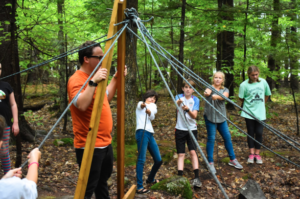Environmental education is often overlooked at a young age. Many students aren’t exposed to the science of their natural environment until they’re in middle school or beyond, at which point their hormone-addled teenaged minds may have turned fallow. Planting the seeds of concern for the environment when children are young comes with many benefits. Not only is it good for the Earth to have people who actually care about conservation, but the subject of life science provides ample learning opportunities for both students and educators.
Here are the top 5 reasons why it’s important to teach young students about the importance of the environment.

1. Environmental Education Builds a Foundation for STEM
Environmental education connects to every field of STEM. It’s a prime resource for teachers who want to do hands-on project-based learning with their students. Science is everywhere in nature! Technology and engineering often replicate or take advantage of natural processes; for example, hydroponics and solar energy panels. Key mathematical concepts such as the golden ratio and the Fibonacci sequence are everywhere in nature. In the engineering design process (EDP), students find problems, conduct research, develop solutions, create prototypes, test and analyze, and then redesign. This process is easy to apply with real world environment problems. With technology, robotics clubs can work on solar panels or other means of alternative energy. It’s easy to take basically any STEM subject and find a fun environmental-based experiment to do either online or in the classroom.
2. Eco-Conscious Children Become More Conscientious Adult Consumers

Environmental education at a young age benefits the larger world. It builds knowledge about nature and helps kids understand what sustainability is. Consuming consciously is something adults are slowly learning today. We can speed this process up if we begin early. Teaching children about the effects they have on nature through experiments on subjects such as water pollution and plastic decomposition will instill a lifelong appreciation for sustainability.
3. Encourages Outdoor Activities

Educating children about the environment allows them to better enjoy the outdoors and the wonders of nature. Today’s generation are the first digital natives who live second lives online. Children become acquainted with phones, tablets, and computers by the time they’re old enough to touch a screen. As a consequence, they’re not as physically active as kids from previous generations, which can have a negative affect on their health. Encouraging outdoor activities allows children to get more exercise, be more creative, and have more respect for nature.
4. Creates Innovative Teachers
Environmental education gives educators the confidence to bring studies outdoors. With outdoor education, teachers have the opportunity to connect their curriculum with the real world. Environmental education breeds interactive learning, which sparks student engagement. Working with the environment challenges teachers to think outside the box on student curriculum, and results in a richer learning experience for everyone.
5. Supports Tolerance and Understanding
How we interpret and interact with environment is connected to everyone’s culture, with some cultures respecting nature more than others. As parents and teachers educate their children about this topic, everybody has the opportunity to better understand other cultures and decrease their intolerance of foreign ideas. Within a world becoming more interconnected by the day, students must recognize and understand other people’s viewpoints. Understanding nature is the first step toward a better future for everyone.
Written by Olivia Kirven and Schauennen dos Santos
Visit the NSTEM page for more posts about our STEM community!

